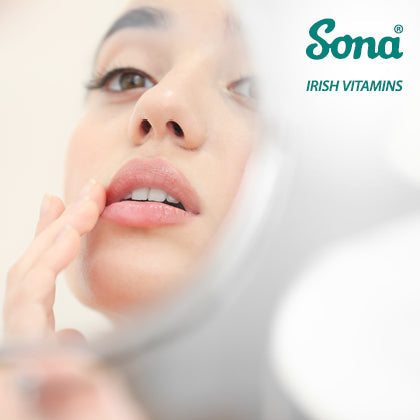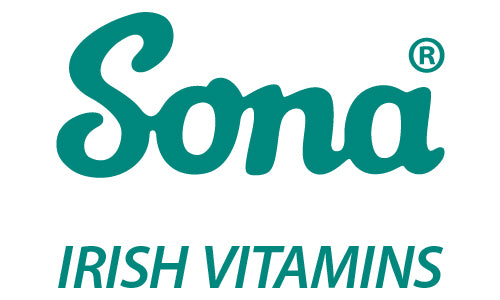
Cold sores are small, painful blisters that usually form around the lips and mouth. They are caused by the herpes simplex virus (HSV), which stays dormant in the body and can reactivate at different times in life. Outbreaks are extremely common, and many people experience them more than once.
While summer sunlight and UV exposure are well-known triggers, cold sores also tend to flare up in autumn and winter. Colder weather, dry air, seasonal viruses and a weakened immune system can all make it easier for HSV to reappear. Stress and tiredness during busy periods further increase the risk. Cold sores are painful and often appear in visible areas, making them hard to ignore. This is why people want to know what causes them, how long they last, whether they are contagious, and the best ways to manage them. Understanding these points can make outbreaks easier to cope with and help reduce their impact on daily life.
What Causes Cold Sores?
Cold sores are the result of infection with the Herpes simplex virus (HSV). Once a person is exposed, usually in childhood, the virus stays in the body for life, hiding in nerve cells. Most of the time, it remains inactive, but under certain conditions, it can reactivate and cause blisters around the lips and face.
Research shows that reactivation is often linked to a combination of triggers rather than one single factor. These can include:
- Weakened immune system: Outbreaks are more likely in autumn and winter, when seasonal viruses are widespread.
- Exposure to strong sunlight: Ultraviolet (UV) light in the summer months can reactivate the virus.
- Stress and fatigue: Which place extra strain on the immune system.
- Hormonal changes: Such as those that occur during menstruation.
- Cold, dry weather: Which irritates the lips and makes reactivation more likely.
Not everyone with HSV will experience frequent cold sores, but those who do often notice patterns linked to these triggers. According to a review by Arduino & Porter (2008), factors such as immune status and environmental triggers may influence how often HSV-1 recurrences occur.
How Long Do Cold Sores Last?
A cold sore outbreak usually follows a predictable course, starting with a tingling or burning sensation around the lips. Within a day or two, small fluid-filled blisters appear. These then break open, crust over, and eventually heal without leaving a scar. The full cycle often takes 7 to 10 days, although recovery time can vary depending on the person’s immune system and general health.
Researchers note that the virus is most active during the early blister stage, which is also when symptoms such as pain and discomfort are most noticeable. Clinical studies suggest that antiviral medicines are most effective when started at the earliest stage of symptoms, ideally within the first 48 hours. Factors such as stress, fatigue, or other illnesses can prolong healing, while proper rest and supportive care may help speed recovery. For most healthy individuals, cold sores resolve on their own, but medical treatment can sometimes shorten the duration or reduce the severity of outbreaks.
Are Cold Sores Contagious?
Cold sores are highly contagious, especially when blisters are visible and filled with fluid. The virus can spread through close contact, such as kissing, as well as by sharing items like cutlery, towels or lip balm. Even when sores are beginning to heal, there is still a risk of transmission, though it is lower than during the blistering stage.
It is also important to note that the virus can spread even when no symptoms are present. This is known as asymptomatic shedding. Although the risk is lower, it helps explain why cold sores are so widespread. Practising good hygiene and avoiding close contact during active outbreaks helps reduce the chance of passing the virus to others.
How to Get Rid of Cold Sores
No cure eliminates the herpes simplex virus, but treatments can help shorten outbreaks and relieve discomfort. Managing cold sores usually involves a combination of medical therapies, home-based approaches and nutritional support.
Medical treatments
Some people use antiviral creams or tablets, which can help ease discomfort when applied at the first signs of a cold sore. These treatments may reduce irritation, but they are not the only option. Simple measures such as pain relief gels or protective lip balms can also support comfort during the healing process.
Nutritional support with Lysine
Beyond short-term relief, nutritional support plays an important role in managing cold sores. The amino acid lysine has been studied for its potential to reduce the frequency and severity of outbreaks. Because the body cannot produce lysine on its own, supplementation can be useful, especially during times of stress or seasonal immune challenges. Sona offers several lysine options tailored to different needs:
- Sona L Lysine 1000mg and Sona L Lysine 500mg provide daily support to help reduce the likelihood of outbreaks.
- Sona Lysinel 5 Day Course is designed to be taken at the first sign of a cold sore. It provides an intensive dose of lysine over five days, supporting the body during the early stages of an outbreak. This option can be useful for people who do not take lysine daily but want targeted support when symptoms begin.
Home remedies
Simple measures can ease symptoms while the sore heals naturally. Applying a cold compress may relieve swelling and pain, while ingredients such as lemon balm extract, aloe vera gel or honey have been reported to soothe discomfort.
Final Thoughts
Cold sores are unpleasant, but they do not need to disrupt everyday life. Recognising the first signs early and supporting the immune system can make a big difference. Healthy routines such as managing stress, getting enough sleep and eating well, combined with the right nutritional support, can help make outbreaks less frequent and easier to manage.
References;
Arduino, P. G., & Porter, S. R. (2008). Herpes Simplex Virus Type 1 infection: overview on relevant clinico-pathological features. Journal of Oral Pathology & Medicine, 37(2), 107–121. https://doi.org/10.1111/j.1600-0714.2007.00586.x
Spruance, S. L., Jones, T. M., Blatter, M. M., Vargas-Cortes, M., Barber, J., Hill, J., & Hogan, D. (2003). High-dose, short-duration, early valacyclovir therapy for episodic treatment of cold sores: results of two randomized, placebo-controlled, multicenter studies. Antimicrobial Agents and Chemotherapy, 47(3), 1072–1080. https://doi.org/10.1128/AAC.47.3.1072-1080.2003
Cleveland Clinic. Herpes Simplex Virus (HSV). Available at: https://my.clevelandclinic.org/health/diseases/22855-herpes-simplex
